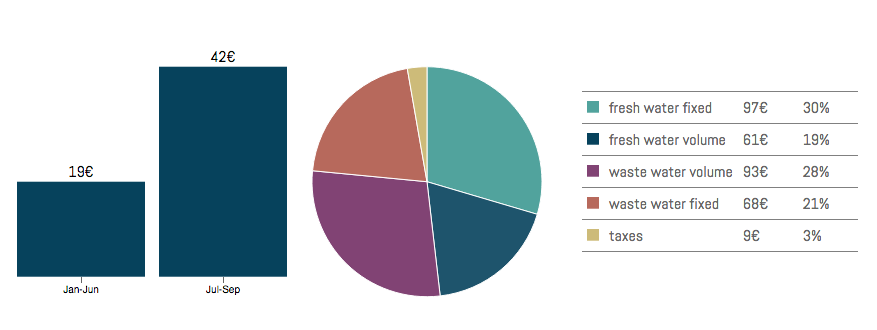Behavioral science, energy use and interaction design: what a strange combination, you might say. However the combination of the three is one of the “hottest” topics online. Companies like Opower or my client, Advizzo (see case study below) are breaking the wall between how energy consumers (water and electricity) interact with the utilities companies while also finding an easier way to communicate and produce benefits for both sides.
Moreover, we are talking about having a predictive, easy way to reduce consumption in order to save money and be more efficient. Behavioral science, and especially behavioral economics plays a huge role in all of this. The reason why, is because it seems we, as consumers, need more than information to change our behaviour and consume less energy for environmental and financials reasons.
Studies have shown that “providing information per se often has surprisingly modest and sometimes even unintended impacts when it attempts to change individuals' behaviour.” It seems that the methods used to “change minds” do not explain everything in behaviour change. For instance, a study (1) of pro-environmental behaviours stated that 80% of the factors that influence behaviour do not result from knowledge or awareness. We, therefore, need to look at other factors that might influence our behaviours – thus our decisions- like context, socially accepted behaviors (social norms), gut feelings like instant acting, the way information is presented to us, or even past experiences that can unconsciously have a say in our decision.
As a recent report on behaviour change explains, “the basic insight of behavioural economics is that our behaviour is guided not by the perfect logic of a super-computer that can analyze the cost-benefits of every action. Instead, it is led by our very human, sociable, emotional and sometimes fallible brain.”
Turning to interaction design, I believe in helping people decide for their best interest and building a fluent communication between the interface and the person. And here behavioral science puts its print by introducing what I call “the necessary feedback” that a consumer might need in order to change his/hers behaviour for the better.
Case study
Advizzo is a UK-based startup that focuses on the customer success and works with behavioral science to achieve that. From my point of view, they are developing the customer experience anyone deserves, easing the work for the utilities and finding a clear way of communicating and engaging customers. Read their report to find out more on customer engagement in the water industry.
I have worked with Advizzo for developing some demo widgets related to energy consumption. The widgets offer you a detailed view of your energy consumption, moving you a step further from awareness to action. See some examples:
1. Ever wondered how much you consume per year? This graph indicates the price and water consumption in a two year comparison. You can also approximate and predict future usage. This information generates more awareness towards energy consumption.

2. Talking about transparency, it is useful for you, as a energy consumer, to know where does your money go when you use energy. (The image below is just a screenshot of the widget, but when it's functional it can show you different breakdowns of your usage when clicking on different areas of water consumption.) The display below is just simple way to offer information on where you consume most and help you adjust your consumption related behaviour.

3. Comparing yourself to other people can act as an impulse to reduce your energy consumption (social norms). This principle works because for people it is natural to make decisions based on what other people are doing, as we are incredibly social creatures. Coupling that with a sentiment (a smiley face if you have a positive outcome - here, decreased energy consumption or sad face if otherwise), helps people make changes in their consumption related behavior. Studies show that "by adding a smiley face, they actually maintained the below average energy consumption. ”(Stephen P. Anderson “Seductive Interaction Design").

What I've learned
Behavioral science and simple interaction design can help in simplifying things like energy management for anyone, helping with waste reduction, and efficient energy usage. Successful customer engagement starts with listening to your clients and proving accurate feedback, things that companies like Advizzo are doing.
References:
(1) Kollmuss and Agyeman (2002) Mind the Gap. Environmental Education Research 8(3): 239-260.

